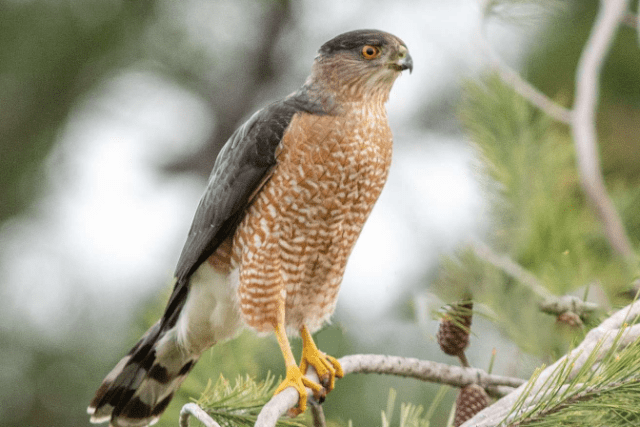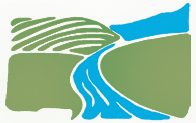
Along with aquatics, forestry and soils, wildlife is another of our valuable natural resources. Wildlife are highly dependent upon the status of aquatic, forestry and soil ecology. Today, the greatest threat to wildlife is habitat loss. The impact of human land use practices on wildlife populations and their habitats is a major concern nation-wide.
At the regional Envirothon the wildlife station will emphasize animal wildlife in New York State. Students will be expected to have a basic understanding of regional species populations and their habitats, how they function and change over time and their role in the ecosystem. They should be able to identify common wildlife species and their corresponding characteristics and habitats.
In addition, the wildlife learner should develop an awareness and knowledge of the following: specific adaptations of wildlife to their environment; wildlife survival needs; predator/prey relationships; food chains and food webs; factors that limit or enhance 1/8 population growth; concepts of carrying capacity and limiting factors; non-native species; threatened and endangered species; and the roles of both the public and wildlife managers in the protection, conservation, management, and enhancement of wildlife populations.
“Without knowing it, we utilize hundreds of products each day that owe their origin to wild animals and plants. Indeed our welfare is intimately tied up with the welfare of wildlife. Well may conservationists proclaim that by saving the lives of wild species, we may be saving our own!
Wildlife Outline
I. Identification of NYS Species (http://www.dec.ny.gov/23.html)
A. Identify NYS wildlife species by specimens, skins/pelts, pictures, skulls, silhouettes, decoys, wings, feathers, scats, tracks, animal sounds, or other common signs
B. Identify general food habits, habitats, and habits from teeth and/or skull morphology
C. Specific habitats of the above
II. Wildlife Ecology
A. Basic ecological concepts and terminology
B. Wildlife population dynamics
1) Carrying capacity
2) Limiting factors
C. Adaptations of wildlife
1) Anatomical, physiological and/or behavioral
D. Biodiversity
1) Genetic, species, ecosystem or community
III. Wildlife Conservation and Management
A. Common management practices and methods
1) Conservation
2) Protection
3) Enhancement
2/8
B. Hunting regulations
C. Land conflicts with wildlife habitat needs
D. Factors influencing management decisions
1) Ecological
2) Financial
3) Social)
E. Legislation
IV. Issues Involving Wildlife and Society
A. Invasive and non-native species
1) Examples in NY
2) Environmental impact
B. Endangered, Threatened, Species of Concern
1) Examples native to NY
2) Habitat requirements
3) Legislation
4) Terminology and factors
C. Diseases
1) Commonly found in NY
For successful completion of the wildlife section, contestants should be able to:
-
Identify the mammal, bird, bird, amphibian and reptile species, insect and other species listed below using mounted specimens, skins/pelts, pictures, skulls, silhouettes, decoys, wings, feathers, scats, tracks, animal sounds, or other common signs.
-
Wildlife Species to study for the Envirothon wildlife competition, you should learn preferred habitat, food, and how to identify the following wildlife from mounts and photos, as well as skins, skulls, and tracks for mammals. Learn the calls for the listed birds. For Game Animals, age and sex criteria should be studied.
Mammals: Black Bear, Bobcat, Canada Lynx, Eastern Cougar, Eastern Coyote, Gray Fox, Gray Wolf, Moose, Red Fox, White-tailed Deer, Allegheny Woodrat, American Marten, Beaver, Fisher, Long- tailed Weasel, Mink, Muskrat, Raccoon, River Otter, Striped Skunk, Indiana Bat, Little Brown Bat, Blue Whale, Finback Whale, Harbor Seal, Humpback Whale, Right Whale, Sei Whale, Sperm Whale cottontail, snowshoe (varying hare), short-tail weasel, least weasel, opossum, the squirrels (gray, red, flying, fox, & chipmunk), woodchuck, porcupine and moles, voles and shrews.
Birds: American Woodcock, Bald Eagle, Bicknell’s Thrush , Black Rail , Black Skimmer, Black Tern , Canada Goose, Cerulean Warbler , Common Loon, Common Nighthawk, Common Tern, Double- crested Cormorant, Eastern Bluebird, Eskimo Curlew, Golden Eagle, Golden-winged Warbler, Grasshopper Sparrow, Great Blue Heron, Great Horned Owl, Henslow’s Sparrow, Horned Lark, Least Tern, Loggerhead Shrike, Mute Swan, Northern Harrier, Osprey, Peregrine Falcon, Piping Plover, Redheaded Woodpecker, Red-shouldered Hawk, Ring-necked Pheasant, Roseate Tern, Ruffed Grouse, Seaside Sparrow, Sedge Wren, Short-eared Owl, Spruce Grouse, Upland Sandpiper, Vesper Sparrow, Whip-poor-will, Wild Turkey, Yellow-breasted Chat, Robin, English Sparrow, Cardinal, American Bittern, Screech Owl, Barn Owl, Snowy Owl, Bobolink, Cat Bird, The Ducks, Snipe, Woodpeckers (Downy, Hairy, Redbellied & Pileated), Flicker and the Yellow Bellied Sapsucker.
Amphibians and Reptiles: Blanding’s Turtle, Bog Turtle, Bullfrog, Diamondback Terrapin, Eastern Massasauga Rattlesnake, Eastern Mud Turtle, Eastern (Red-Spotted) Newt, Eastern Hellbender, Eastern Tiger Salamander, Northern Cricket Frog, Snapping Turtle, Spotted Turtle, Timber Rattlesnake, Atlantic Hawksbill Sea Turtle, Atlantic Ridley Sea Turtle, Green Sea Turtle, Leatherback Sea Turtle, Loggerhead Sea Turtle, snakes (garter, redbellied, ring-necked & copperhead), painted turtle, frogs (green, leopard & pickerel), American toad
Others: Monarch Butterfly, Karner Blue Butterfly, Praying and Chinese Mantises, Chittenango Ovate Amber Snail, Dwarf Wedge Mussel, Northeastern Beach Tiger Beetle, American Burying Beetle, Boxelder Bug, Pine Shoot Beetle, Viburnum Leaf Beetle
-
Identify general food habits , habitats, and habits from teeth and/or skull morphology
-
Know the preferred habitat types and specific habitat requirements of the above wildlife species and the factors that affect wildlife suitability
-
Know and understand basic ecological concepts and terminology including the difference between an ecosystem, community and population
-
Understand wildlife population dynamics and limiting and decimating factors of wildlife management
-
Be able to identify, describe and explain adaptations of wildlife to their environment
-
Understand the 3 levels of biodiversity and the implications of loss at each level
-
Identify common wildlife management practices and methods that are being used to manage and improve wildlife habitat
-
Understand the role of federal and state Fish and Wildlife Agencies in the management, conservation, protection, and enhancement of fish and wildlife and their habitats.
-
Be familiar with finding information found within the NYS hunting safety guide and hunter education program
-
Understand the environmental impact of invasive species, threat to biodiversity, and impact on native wildlife
-
Understand common land use decisions that affect wildlife population growth, environmental degradation, and habitat reduction
-
Be familiar with common wildlife diseases from microbes, parasites, toxins, and other biological and physical agents
-
Understand the terminology and factors that affect threatened and endangered wildlife species.
-
Know examples of NYS species that are extinct, extirpated, endangered, threatened, and special concern
-
Understand the role of the Endangered Species Act in helping to conserve endangered and threatened species.
-
Know the organizations and agencies responsible for listing and protecting endangered species on global, federal, and state levels
_____________________________________________________________________________________________________________
Wildlife Sample Questions
1.This song is being sung by what species of bird?
a. Cerulean Warbler
b. Eastern Bluebird
c. Vesper Sparrow
d. Mute Swan
2. Habitat is the place where an animal lives. It provides for the needs required by the animal to survive. The number of animals a habitat can support in good health is known as its _______
a .bionic potential
b. harvestable surplus
c. carrying capacity
d. home range
3.Many of the wildlife species of New York live in a certain habitat because of their needs to survive or physical adaptations that help them live in the habitat. Least suited for a swamp/marsh habitat are__________.
a. Woodcocks
b. Redwing Blackbirds
c. Woodducks
d .Woodchucks
4.During the last century, human impacts on our planet have led to an increasing and alarming loss of biodiversity. Scientists estimate that current extinction rates exceed those of prehistoric mass extinctions. Loss of biodiversity also means loss of genetic diversity and loss of ecosystems. In New York State the major cause for declines in species populations is which of the following?
a. habitat destruction, alteration and fragmentation
b. the spread of invasive species
c. pollution
d. illegal collection
e. climate change
5.The following habitat management activities; 1) elimination of barriers that hinder migration between ponds and nest or hibernation sites, 2) placement of “turtle crossing” signs to warn motorists of the turtle’s presence in key areas, and 3) maintenance of open areas for nesting, have been recommended to protect which species?
a. Eastern mud turtle
b. Diamondback terrapin
c. Loggerhead sea turtle
d .Bog turtle
6.Only the basic hunter education course is required to obtain a license to hunt waterfowl outside of special hunting areas. In addition to a small game hunting license what other requirement is necessary to hunt ducks in New York State?
a. Waterfowl hunter education course certificate
b. Federal Migratory Bird Hunting Stamp.
c. 36 square inches of hunter orange clothing
d. a boat
7.New York State’s Legislature has recognized certain wildlife species as significant to the state and designated them as state symbols. The state bird, fish, mammal and reptile are _____.
a. Bluebird, Brook Trout, White-tailed Deer and Spotted Turtle
b. Blue Jay, Speckled Trout, Beaver and Milk Snake
c. Bald Eagle, Speckled Trout, White-tailed Deer and Painted Turtle
d. Bluebird, Brook Trout, Beaver and Snapping Turtle
8.Didymo (Didymosphenia geminata), also known as “rock snot,” is a non-native invasive microscopic algae (diatom) that can produce large amounts of stalk material to form thick brown mats on stream bottoms. Didymo threatens aquatic habitat, biodiversity and recreational opportunities. The only known method for controlling or eradicating didymo once it infests a water body is which of the following?
a. Inspect, Clean and Dry method
b. Weekly electroshocking the stream
c. Chlorination
d. There is no known control method
9.Little brown bats, the most common hibernating species of bats in New York, have sustained the largest number of bat deaths from which of the following diseases?
a. Brain worm
b. Type E botulism
c. Trichomoniasis
d. White-nose syndrome
_____________________________________________________________________________________________________
Wildlife References
I. Identification of NYS Species
Bats, Bear, Beaver, Bobcat, Canada Goose , Coyote, Deer, Eagles & Osprey, Fisher, Fox, , Grouse, Herons, Mink & Muskrat, River Otter, Owls, Pheasants, Rabbit, Raccoon, Raptors, Shunk, Weasels, Wild Turkey, Woodcock, Woodpeckers, Woodrat,
Smithsonian Mammal Guide, Amphibians & Reptiles, Bluebird, Bog Turtle, Wetland Mammals, Ringneck, Grassland Birds,
Small Mammals, Large Mammals, Eastern Bluebird, Cottontail, Flying Mammals, Marine Mammals, Birds, Insects, Tracks, Track Card, Age of Deer,
Mammal Skulls, Skulls & Teeth, Hinterland Who’s Who
II. Wildlife Ecology
NE Wildlife, Wildlife Ecology, Early Successional Habitat, Management Considerations, American Woodcock Habitat BMPs,
Habitat Disturbance, Backyard Habitat, Mortality Fact Sheet Crypsis-Mimicry, Biodiverstity Brochure, Climate Change and Bio Diversity
III. Wildlife Conservation and Management
Managing Whitetail Deer in Urban Managing White Tail Deer, Hunting and Migratory Birds, Waterbird Fact Sheet, Songbird Fact Sheet, Deer Management, Whitetail Deer, Moose, Coyotes, Black Bear, Fields & Grassland Birds, Hayfields & Grassland Birds, DEC Migratory Bird Guide, Hunting Guide (NY DEC), Migratory Bird Fact Sheet
IV. Issues Involving Wildlife and Society
Nuisance & Invasive Species, Delisting, Endangered, Karner Blue Butterfly, Current NY T&E List, NE Cottontails,
Critical Habitat, What You Can Do, NY Wildlife Diseases, Bird Flu
______________________________________________________________________________________________________
Additional References:
Bird Guide, Food Chain, Artificial Nesting, Cool SeasonGrasses, Freshwater Wetland, Habitat Issue, Riparian, Snags, Urban Management, Wetland Woodland, Planting Trees, Blackbirds, Bluejay, Bob White, Cardinal, Chicks & Creeps, Chipmunk, Diving Ducks, Dove, Elk, Finches,
Flycatchers, Hummingbird, Kingfisher, Mallard, Mice & Moles, Mockingbird, Nighthawk, Opossum, Porcupine, Puddle duck, Rails, Shews, Snowgoose,
Snowshoe, Squirrels, Swallows, Tanagers, Thrushes, Towhee, Tundra Swan, Vireos, Vultures, Warblers, Woodchuck, Werns, Woodduck, Water Fowl
Website References:
NYS DEC Endangered Program
NYS Fishing Regulations Guide
NYS Hunting and Trapping Guide

